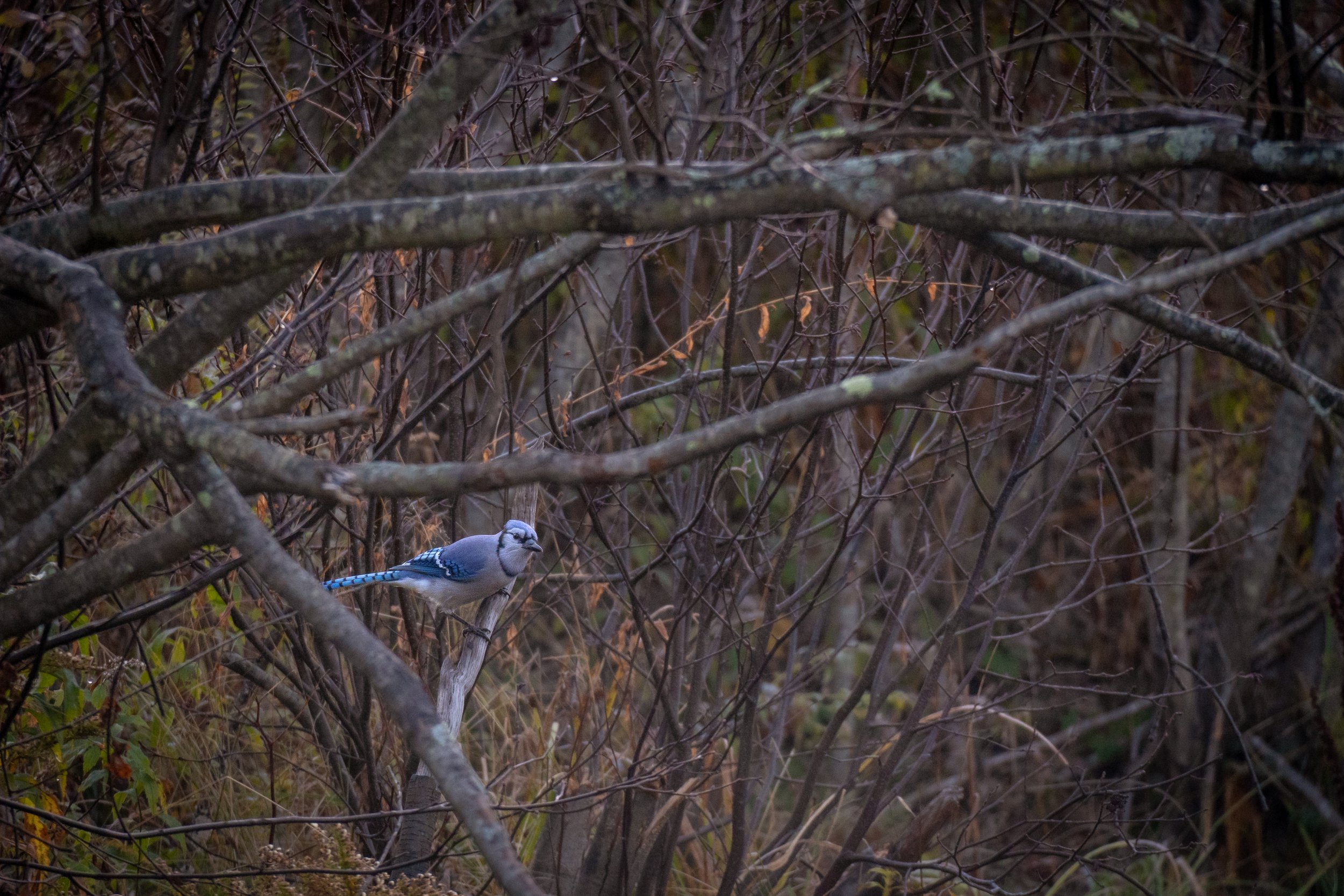
Blue Jay
Cyanocitta cristata
Family: Corvidae
First photographed: October 19, 2022
Location: Auburn, NH
…I followed the path towards a small pond. Animals congregated near water sources, right? There was a group of wooden benches that someone had scattered seeds on. My eyes lit up when I saw a dozen or so little birds flying and hopping around the area. Sparrows, black-capped chickadees and a few “new” birds that I had not yet photographed all flew in and out of my frame. I recognized most of them – the white-breasted nuthatch, tufted titmouse and even a blue jay…
Blue Jay
Birds of NH #: 8/278
Avg. Clutch Size: 3-7
Avg. Brood/s per year: 1
When I first started the Birds of NH challenge, the blue jay was the bird that I saw plenty of but was unable to get a decent photo until after ten days of trying. I would hear the blue jay’s raucous call and then catch a glimpse of a blue streak bombing across the sky. To be honest, I had not expected it to take as long as it did to check this bird off from the list. They were one of those bird species that I had always seen about growing up and was very surprised when a week had gone by without getting a good opportunity to photograph one.
That said, it was not too long before I got my chance. I was set up along a forest trail next to a rock wall that was covered in sunflower seeds. All the classic bird feeder birds were there, as well as representatives from the red and gray squirrel communities. I did not have to wait too long before this blue jay came in for a snack.
What I liked about this spot was that the sun was streaming in through the trees to highlight this section of the stone wall that the animals were eating from. I should have tried lowering my shutter speed to help with the exposure but overall, I was very happy with the experience by the rock wall.
With their bold colors and their loud calls, blue jays are very conspicuous and are not too shy about making their presence known. They are almost always out and about when I am walking through the woods as well as when I am in more developed areas. They frequent bird feeders and will shoo away smaller birds (intentionally or not) with the gusts of wind from their much larger wings when they come in to feed.
Their crest is a good indicator of the level of comfort or alertness and is used to communicate with other blue jays. As one might expect, the lower the crest, the more relaxed the blue jay is. The first image above is a good example of this, while below one can see that opposite.
This blue jay had just flown in from the nearby tree line and was perched above some hanging bird suet. Its crest is raised high as it takes a few moments to look around before hopping down to the ground for a morning meal.
October 19, 2022 - First Image
November 29, 2022 - Favorite Image










